Chinese 上都 Literal meaning Upper Capital Wade–Giles Shangtu | Hanyu Pinyin Hanyu Pinyin | |
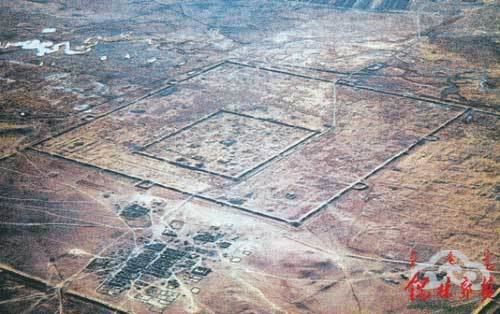 | ||
Weather 1°C, Wind N at 10 km/h, 47% Humidity | ||
Shangdu ([ʂɑ̂ŋ tú]), also known as Xanadu (/ˈzæ.nə.duː/; Mongolian: Šandu), was the capital of Kublai Khan's Yuan dynasty in China, before he decided to move his throne to the Jin dynasty capital of Zhōngdū (Chinese: 中都; literally: "Middle Capital"), which he renamed Khanbaliq, present-day Beijing. Shangdu then became his summer capital.
Contents
- hazard ops tezza s skills without cheats and ovc elimination shangdu palace 09 01 2016
- Description
- Description by Marco Polo 1278
- Description by Toghon Temur 1368
- Samuel Purchas 1625
- Samuel Taylor Coleridge 1797
- Astronomy
- In popular culture
- References

Shangdu (Xanadu) was visited by the Venetian traveller Marco Polo in about 1275, and was destroyed in 1369 by the Ming army under Zhu Yuanzhang. In 1797 historical accounts of the city inspired the famous poem Kubla Khan by the English Romantic poet Samuel Taylor Coleridge.
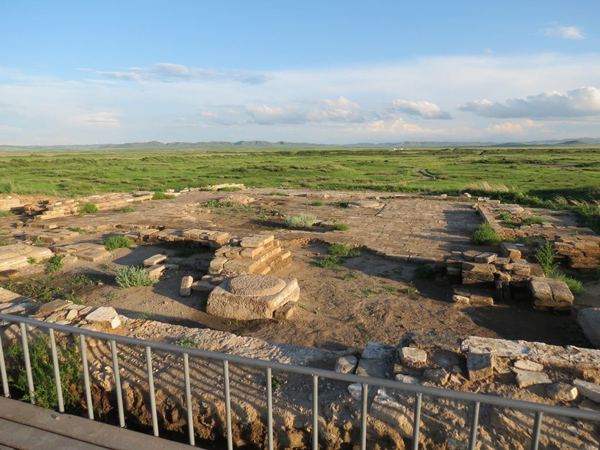
hazard ops tezza s skills without cheats and ovc elimination shangdu palace 09 01 2016
Description
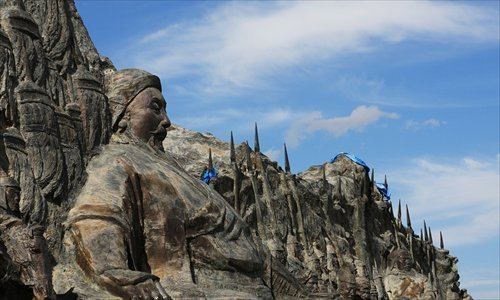
Shangdu was located in what is now called Inner Mongolia, 350 kilometres (220 mi) north of Beijing, about 28 kilometres (17 mi) northwest of the modern town of Duolun. The layout of the capital is roughly square shaped with sides of about 2,200 m; it consists of an "outer city", and an "inner city" in the southeast of the capital which has also roughly a square layout with sides about 1,400 m, and the palace, where Kublai Khan stayed in summer. The palace has sides of roughly 550 m, covering an area of around 40% the size of the Forbidden City in Beijing. The most visible modern-day remnants are the earthen walls though there is also a ground-level, circular brick platform in the centre of the inner enclosure.
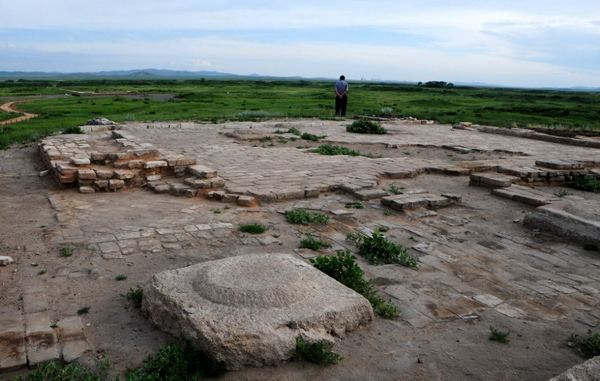
The city, originally named Kaiping (开平, Kāipíng), was designed by Chinese architect Liu Bingzhong from 1252 to 1256, and Liu implemented a "profoundly Chinese scheme for the city's architecture". In 1264 it was renamed Shangdu. At its zenith, over 100,000 people lived within its walls. In 1369 Shangdu was occupied by the Ming army and put to the torch. The last reigning Khan, Toghun Temür, fled the city, which was abandoned for several hundred years.
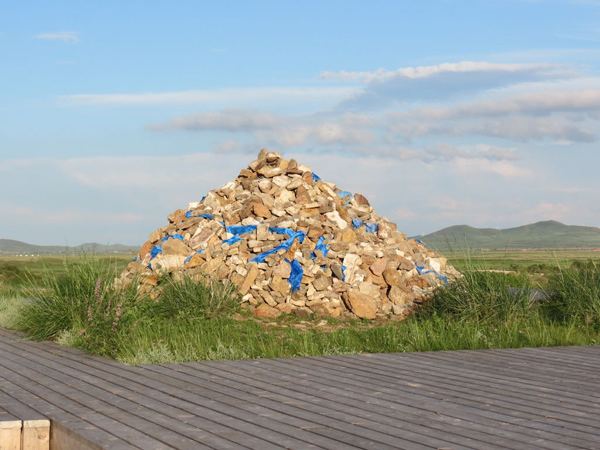
In 1872, Steven Bushell, affiliated with the British Legation in Beijing, visited the site and reported that remains of temples, blocks of marble, and tiles were still to be found there. By the 1990s, all these artifacts were completely gone, most likely collected by the inhabitants of the nearby town of Dolon Nor to construct their houses. The artwork is still seen in the walls of some Dolon Nor buildings.
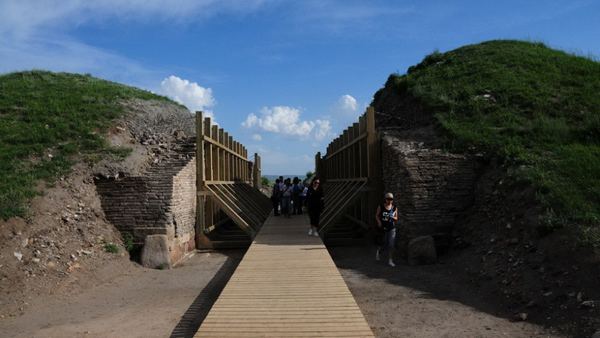
Today, only ruins remain, surrounded by a grassy mound that was once the city walls. Since 2002, a restoration effort has been undertaken. In June 2012, Shangdu was made a World Heritage Site.
Description by Marco Polo (1278)

The Venetian explorer Marco Polo is widely believed to have visited Shangdu in about 1275. In about 1298–99, he dictated the following account, one of the most complete descriptions of the city as it existed:
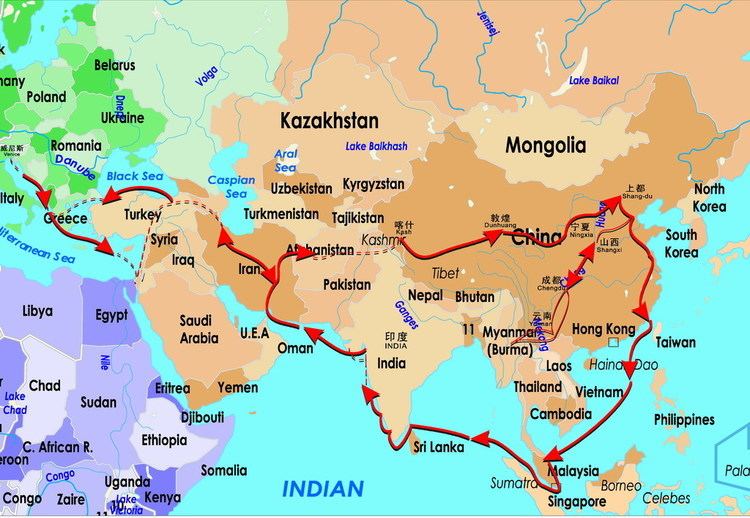
And when you have ridden three days from the city last mentioned, between north-east and north, you come to a city called Chandu, which was built by the Khan now reigning. There is at this place a very fine marble palace, the rooms of which are all gilt and painted with figures of men and beasts and birds, and with a variety of trees and flowers, all executed with such exquisite art that you regard them with delight and astonishment.
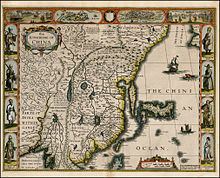
Round this Palace a wall is built, inclosing a compass of 16 miles, and inside the Park there are fountains and rivers and brooks, and beautiful meadows, with all kinds of wild animals (excluding such as are of ferocious nature), which the Emperor has procured and placed there to supply food for his gerfalcons and hawks, which he keeps there in mew. Of these there are more than 200 gerfalcons alone, without reckoning the other hawks. The Khan himself goes every week to see his birds sitting in mew, and sometimes he rides through the park with a leopard behind him on his horse's croup; and then if he sees any animal that takes his fancy, he slips his leopard at it, and the game when taken is made over to feed the hawks in mew. This he does for diversion.
Moreover at a spot in the Park where there is a charming wood he has another Palace built of cane, of which I must give you a description. It is gilt all over, and most elaborately finished inside. It is stayed on gilt and lacquered columns, on each of which is a dragon all gilt, the tail of which is attached to the column whilst the head supports the architrave,and the claws likewise are stretched out right and left to support the architrave. The roof, like the rest, is formed of canes, covered with a varnish so strong and excellent that no amount of rain will rot them. These canes are a good 3 palms in girth, and from 10 to 15 paces in length. They are cut across at each knot, and then the pieces are split so as to form from each two hollow tiles, and with these the house is roofed; only every such tile of cane has to be nailed down to prevent the wind from lifting it. In short, the whole Palace is built of these canes, which I may mention serve also for a great variety of other useful purposes. The construction of the Palace is so devised that it can be taken down and put up again with great celerity; and it can all be taken to pieces and removed whithersoever the Emperor may command. When erected, it is braced against mishaps from the wind by more than 200 cords of silk.
The Khan abides at this Park of his, dwelling sometimes in the Marble Palace and sometimes in the Cane Palace for three months of the year, to wit, June, July and August; preferring this residence because it is by no means hot; in fact it is a very cool place. When the 28th day of [the Moon of] August arrives he takes his departure, and the Cane Palace is taken to pieces. But I must tell you what happens when he goes away from this Palace every year on the 28th of the August [Moon].."
Description by Toghon Temur (1368)
The lament of Toghon Temur Khan (the "Ukhaant Khan" or "Sage Khan"), concerning the loss of Daidu (Beijing) and Heibun Shanduu (Kaiping Xanadu) in 1368, is recorded in many Mongolian historical chronicles. The Altan Tobchi version is translated as follows:
Samuel Purchas (1625)
In 1614, the English clergyman Samuel Purchas published Purchas his Pilgrimes – or Relations of the world and the Religions observed in all ages and places discovered, from the Creation unto this Present. This book contained a brief description of Shangdu, based on the early description of Marco Polo:
"In Xandu did Cublai Can build a stately Pallace, encompassing sixteen miles of plaine ground with a wall, wherein are fertile Meddowes, pleasant Springs, delightfull streames, and all sorts of beasts of chase and game, and in the middest thereof a sumpuous house of pleasure, which may be moved from place to place."
In 1625 Purchas published an expanded edition of this book, recounting the voyages of famous travellers, called Purchas his Pilgrimes. The eleventh volume of this book included a more detailed description of Shangdu, attributed to Marco Polo and dated 1320:
"This Citie is three dayes journey Northeastward to the Citie Xandu, which the Chan Cublai now reigning built; erecting therein a marvellous and artificiall Palace of Marble and other stones, which abutteth on the wall on one side, and the midst of the Citie on the other. He included sixteene miles within the circuit of the wall on that side where the Palace abutteth on the Citie wall, into which none can enter but by the Palace. In this enclosure or Parke are goodly meadows, springs, rivers, red and fallow Deere, Fawnes carrying thither for the Hawkes (of whom are three mewed above two hundred Gerfalcons which he goeth once a week to see) and he often useth one Leopard or more, sitting on Horses, which he setteth upon the Stagges and Deere, and having taken the beast, giveth it to the Gerfalcons, and in beholding this spectacle he taketh wonderful delight. In the middest in a faire wood he hath a royall House on pillars gilded and varnished, on every inch of which is a Dragon all gilt, which windeth his tayle about the pillar, which his head bearing up the loft, as also with his wings displayed on both sides; the cover also is of Reeds gilt and varnished, so that the rayne can doe it no injury; the reeds being three handfuls thick and ten yards log, split from knot to knot. The house itselfe also may be sundered, and taken downe like a Tent and erected again. For it is sustained, when it is set up, with two hundred silken cordes. Great Chan useth to dwell there three moneths in the yeare, to wit, in June, July and August.
Samuel Taylor Coleridge (1797)
In 1797, according to his own account, the English poet Samuel Taylor Coleridge was reading about Shangdu in Purchas his Pilgrimes, fell asleep, and had an opium-inspired dream. The dream caused him to begin the poem known as 'Kubla Khan'. Unfortunately Coleridge's writing was interrupted by an unnamed "man from Porlock", causing him to forget much of the dream, but his images of Shangdu became one of the best-known poems in the English language.
Coleridge described how he wrote the poem in the preface to his collection of poems, Christabel, Kubla Khan, and the Pains of Sleep, published in 1816:
"In the summer of the year 1797, the Author, then in ill health, had retired to a lonely farm-house between Porlock and Linton, on the Exmoor confines of Somerset and Devonshire. In consequence of a slight indisposition, an anodyne had been prescribed, from the effects of which he fell asleep in his chair at the moment that he was reading the following sentence, or words of the same substance, in 'Purchas's Pilgrimes':
Here the Khan Kubla commanded a palace to be built, and a stately garden thereunto. And thus ten miles of fertile ground were inclosed with a wall.
Coleridge's description of Shangdu has echoes of the works of both Marco Polo and Samuel Purchas. In his description of Shangdu, Marco Polo wrote:
"...Round this Palace a wall is built, inclosing a compass of sixteen miles, and inside the Park there are fountains and rivers and brooks and beautiful meadows, with all kinds of wild animals (excluding such as are of ferocious nature)...
This became, in Purchas's book Purchas his Pilgrimes:
In Xandu did Cublai Can build a stately Pallace, encompassing sixteen miles of plaine ground with a wall, wherein are fertile Meddowes, pleasant Springs, delightfull streames, and all sorts of beasts of chase and game, and in the middest thereof a sumpuous house of pleasure, which may be moved from place to place.
This became, in Coleridge's poem:
In Xanadu did Kubla KhanA stately pleasure-dome decree:Where Alph, the sacred river, ranThrough caverns measureless to manDown to a sunless sea.So twice five miles of fertile groundWith walls and towers were girdled round:And there were gardens bright with sinuous rills,Where blossomed many an incense-bearing tree;And here were forests ancient as the hills,Enfolding sunny spots of greenery. (lines 1–11)Astronomy
In 2006, the International Astronomical Union (IAU) named a continent-sized area of Saturn's moon Titan as Xanadu, referring to Coleridge's poem. Xanadu has raised considerable interest in scientists after its radar image showed its terrain to be quite similar to earth's terrain with flowing rivers (probably of methane and ethane, not of water as they are on Earth), mountains (of ice, not rock) and sand dunes.
In popular culture
Thanks to the poem by Coleridge, Xanadu became a metaphor for splendor and opulence. It was the name of Charles Foster Kane's estate in the film Citizen Kane, and also that of Mandrake the Magician in the long-running comic strip. The title of the 1980 film Xanadu is a reference to Coleridge's poem. This film starred Gene Kelly and Olivia Newton-John and was widely considered a big-budget flop, but its soundtrack spawned several hit singles for Newton-John, such as the number one hit "Magic", a duet with Cliff Richard called "Suddenly", and, with Electric Light Orchestra accompaniment, the title song "Xanadu". ELO had soundtrack hits of their own with "I'm Alive" and "All Over the World".
In the Kurt Vonnegut novel, Timequake, Xanadu is the name of a retreat for prolific writers in a resort on Cape Cod. Xanadu was featured in the short story by Ray Bradbury called "A Miracle of Rare Device", written in 1962 and republished in 1964 in the collection The Machineries of Joy. The story was later made into a television episode. In Xanadu is a 1989 travel book by William Dalrymple; at the age of 22 he sets off along the Silk Road from Antioch.
In early 1980, Teena Marie had a US R&B top 40 hit with "Behind the Groove" that mentions Xanadu. In 1968, UK pop/rock group Dave Dee, Dozy, Beaky, Mick & Tich had a UK number one hit with "The Legend of Xanadu". Another known reference to Coleridge's poem is the song "Xanadu" by Canadian rock band Rush in their 1977 album A Farewell to Kings. In their debut album Welcome to the Pleasuredome, Frankie Goes to Hollywood referred to the poem in the title track.
In the Japanese light novel and anime series Shakugan no Shana, Xanadu is the name of the paradise to be created by the God of Creation (Snake of the Festival). In the sci-fi/cyberpunk/fantasy novels Otherland by Tad Williams, Paul Jonas passes through a "simworld", or highly realistic simulation, of Xanadu, as described in Coleridge's poem.
Xanadu is revealed to be an alternate name for the utopian city of Trala-La, a setting from the Scrooge McDuck Disney comic books, originally created by Carl Barks and expanded on by Don Rosa in his story "Return To Xanadu", where its revealed that Genghis Khan had the capital of his empire placed there after he occupied the city, and hid the massive treasury of the Mongul Empire in the massive underground reservoir that drained the river flowing through the city, creating the "sunless sea" mentioned in Coleridge's poem.
Arthur C. Clarke wrote a parody of Coleridge's poem, describing his tumultuous experience co-scripting the film 2001. It goes:
For MGM did Kubrick, StanA stately astrodome decreeWhile Art, the s.f. writer, ranThrough plots incredible to man,In search of solvency....So twice five miles of Elstree groundWith sets and props were girdled round...A savage place! as eerie and enchantedAs ere beneath a flickering arc was hauntedBy child-star wailing for her demon mother...For months meandering with a mazy motionThrough stacks of scripts the desperate writer ranThen reached that plot incredible to manAnd sank, enSCUBA'd in the Indian Ocean.And midst the tumult Kubrick heard from farAccountants' voices, prophesying war!